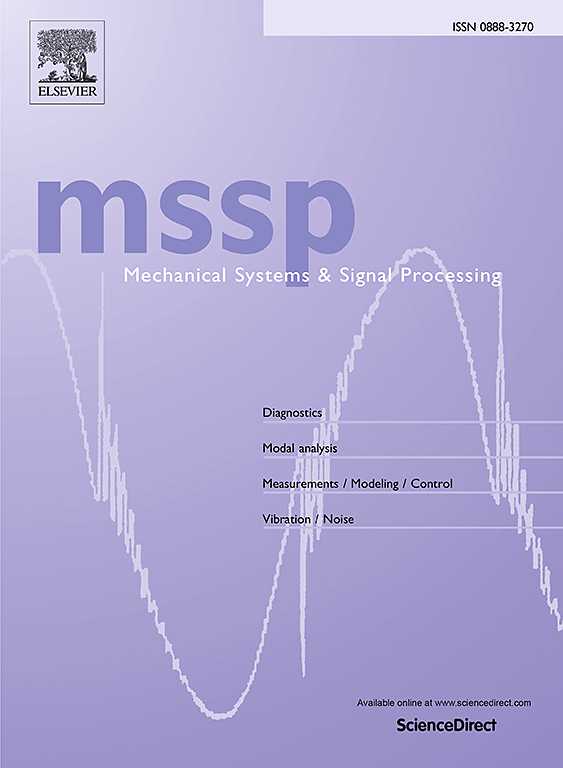Diagnosis of composite faults for complex industrial machinery: A label-assisted self-supervised clustering approach
IF 7.9
1区 工程技术
Q1 ENGINEERING, MECHANICAL
引用次数: 0
Abstract
Early detection of faults is crucial to ensure the effective operation of industrial machinery. Incipient faults are hard to detect because the fault signals are weak, lack sufficient labels, and there is interference caused by multiple sensor signals and a large amount of noise background. Once a fault occurs, it will usually lead to composite faults that are coupled together, seriously affecting the accuracy of fault diagnosis. To overcome these challenges, this paper proposes a Label-assisted Self-supervised Clustering (LASSC) approach, which consists of two stages. The first stage is to mine the coupling characteristics of multi-sensor signals, and the second stage is to judge the composite fault states. Due to significant differences in magnitude, some fault features are ignored when learning from multi-sensor signals. To cope with this, constraint boundaries-based normalization is employed. Unlabeled data are projected onto a weight matrix through feature clustering, and the composite fault features are mined through unsupervised clustering. With the constraint of the assistance labels, self-supervised clustering integrates information from all channels to diagnose composite faults. Experiments are conducted using the proposed LASSC approach on the CWRU dataset to validate the accuracy and computational efficiency of the model. In addition, a series of experiments are designed on the excavator dataset, such as sample imbalance and limited labeled data, to verify the adaptability of the model in practical industrial applications. In addition, the application of this method in excavator cases revealed the causes of composite fault through interpretability analysis, enabling more targeted maintenance recommendations for industrial machinery faults.

求助全文
约1分钟内获得全文
求助全文
来源期刊

Mechanical Systems and Signal Processing
工程技术-工程:机械
CiteScore
14.80
自引率
13.10%
发文量
1183
审稿时长
5.4 months
期刊介绍:
Journal Name: Mechanical Systems and Signal Processing (MSSP)
Interdisciplinary Focus:
Mechanical, Aerospace, and Civil Engineering
Purpose:Reporting scientific advancements of the highest quality
Arising from new techniques in sensing, instrumentation, signal processing, modelling, and control of dynamic systems
 求助内容:
求助内容: 应助结果提醒方式:
应助结果提醒方式:


